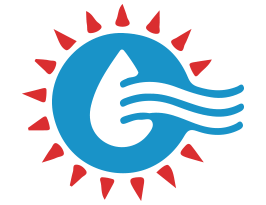
Sometimes, replacing outdated technology is a smart financial decision. That’s especially true with thermostats. Many homeowners still rely on older, manual thermostats that lack modern features designed to reduce energy use and improve comfort. What may seem like a minor upgrade can actually have a measurable impact on your utility bills.
Are you currently scratching your head, wondering, "Is my old thermostat costing me money?" The answer could be yes, and the costs often go unnoticed until you start comparing data.
We’ll look closely at how older thermostats contribute to energy waste, why they often underperform and how a modern replacement can solve these issues.
Why Thermostat Age Matters More Than You Might Think
Older thermostats are often limited in both accuracy and functionality. Many were designed before today's high-efficiency HVAC systems and do not communicate effectively with modern equipment. They rely on basic sensors, outdated wiring and manual controls that cannot adjust automatically for time of day, weather conditions or occupancy. Over time, sensor accuracy can drift, leading to erratic heating or cooling cycles and unnecessary energy use.
If you're noticing uneven temperatures or longer-than-expected system runtimes, it's likely tied to thermostat misreads. These issues lead directly to higher energy use and accelerated wear on HVAC components.
How Your Old Thermostat May Be Costing You Money
Let’s break down exactly how thermostat age affects operating costs:
- Inaccurate Temperature Readings: As sensors degrade, thermostats may overcompensate by running your HVAC system longer than needed. This adds to your energy bill and stresses equipment.
- No Programmable Settings: Older thermostats usually can't schedule different temperatures for different times. That forces your HVAC system to run even when no one’s home, wasting both heating and cooling energy.
- Inability to Adapt to Daily Patterns: A lack of learning capability means your system doesn't recognize when your home is empty, asleep or active. That leads to unnecessary cycles and higher consumption.
If your HVAC system is running more often than expected or struggling to maintain a consistent indoor temperature, there's a good chance your old thermostat is costing you money.
Can an Old Thermostat Cost You Money on Your Energy Bill?
Yes, and the impact is usually more significant than most homeowners realize. Let’s say your thermostat causes your furnace to run just ten minutes longer per day than necessary. Over the course of a heating season, that adds up to dozens of extra hours. Multiply that by your cost per kilowatt-hour or therm, and the additional cost becomes clear.
In cooling seasons, the impact is just as strong. An outdated thermostat may ignore humidity levels, fail to cycle the air conditioner efficiently or react too slowly to indoor temperature changes. All of this leads to higher energy consumption and less effective temperature control.
How Your Old Thermostat May Be Costing You Money Without You Noticing
This isn't always about obvious malfunctions. Sometimes the thermostat works, but not well.
- Short Cycling: A thermostat that triggers your HVAC system too frequently wears down components, reduces airflow efficiency and can increase indoor humidity.
- Overheating or Overcooling: Misreads cause the system to overshoot the target temperature, creating discomfort and unnecessary energy use.
- Nighttime Inefficiency: Without automated nighttime setback settings, you may be heating or cooling at daytime levels while everyone is asleep.
All of these scenarios demonstrate how your old thermostat may be costing you money in ways that are easy to overlook.
Smart Thermostats Offer Precise, Adaptive Control
If you’re considering a smart thermostat installation in Pittsburgh, PA, you're not just buying a new device. You're adding functionality that significantly improves efficiency. Features like remote access, geofencing and adaptive scheduling mean your HVAC system only runs when it needs to.
Smart thermostats can also integrate with other systems, like humidity control, to create a more responsive indoor climate. The long-term benefit is a more balanced, lower-cost operation of your HVAC system.
Installing a smart thermostat often helps you identify broader HVAC issues, too. If airflow is restricted or if your ducts are leaky, the system may report abnormal cycles or performance drops. That insight can lead to preventive maintenance before problems escalate.
Upgrade Your Thermostat Today and Stop Wasting Energy
So, is your old thermostat costing you money? Probably more than you think. Inaccurate readings, poor scheduling capabilities and limited compatibility with modern HVAC equipment lead directly to higher energy bills and accelerated system wear. The better question might be: how much could you save by upgrading?
Gillece Services has decades of experience helping Pittsburgh-area homeowners upgrade to more efficient, reliable systems. We handle all aspects of thermostat installation, HVAC repair and electrical work with fully stocked trucks and trained technicians ready to solve problems efficiently. Since 1980, we've helped homeowners improve system performance, reduce long-term costs and get more from their home’s equipment. Whether you need help optimizing your electrical system or require AC repair in Pittsburgh, we have your back.
If you're ready to reduce energy waste and improve your HVAC system’s performance, contact Gillece Services to schedule a thermostat upgrade! Our team is ready to help you make the switch with precision and attention to detail.





